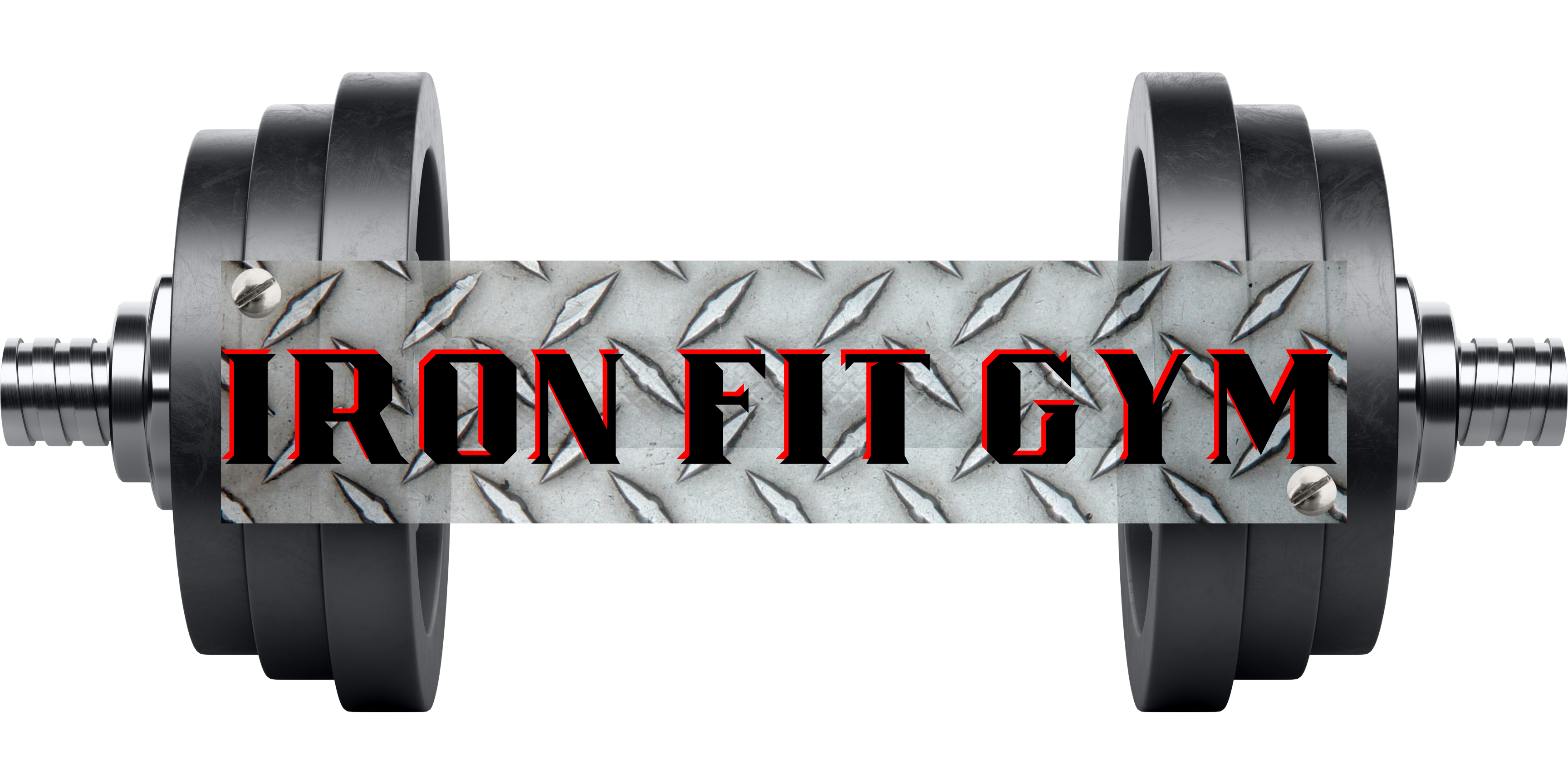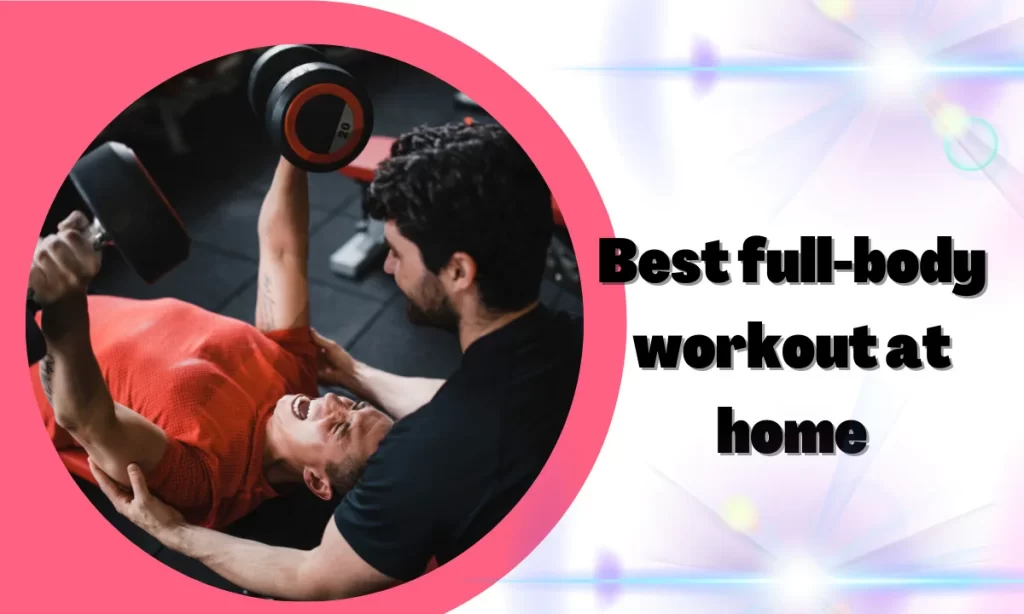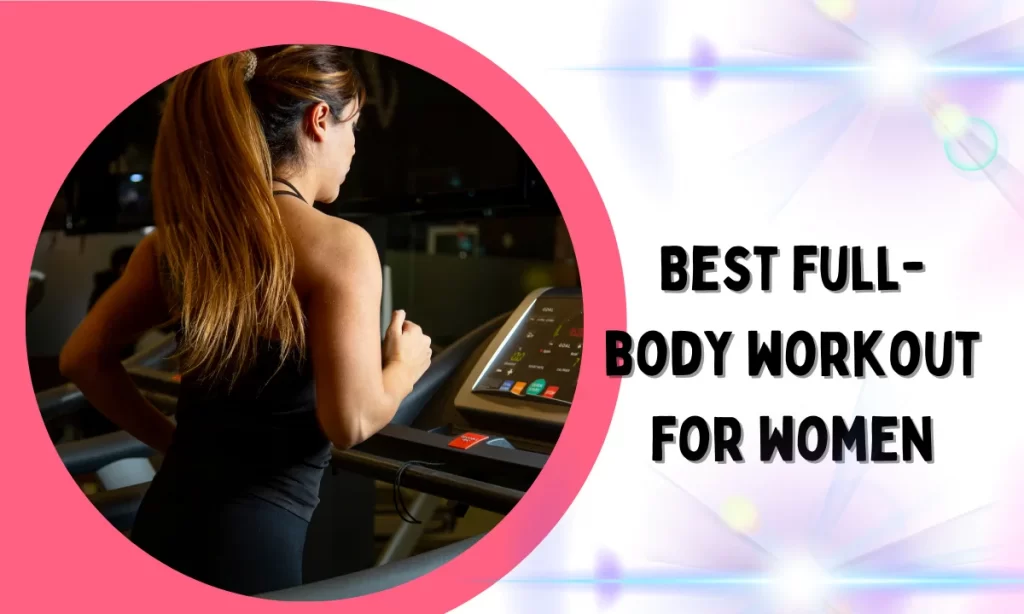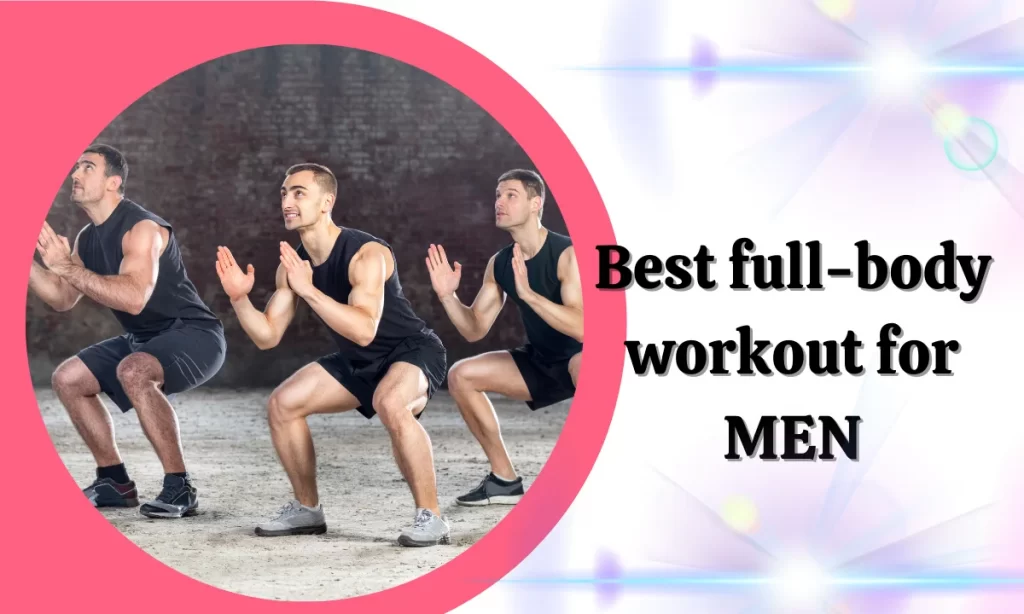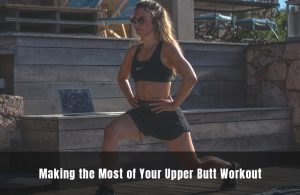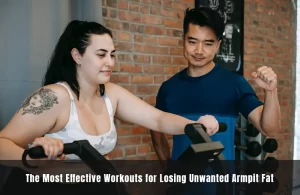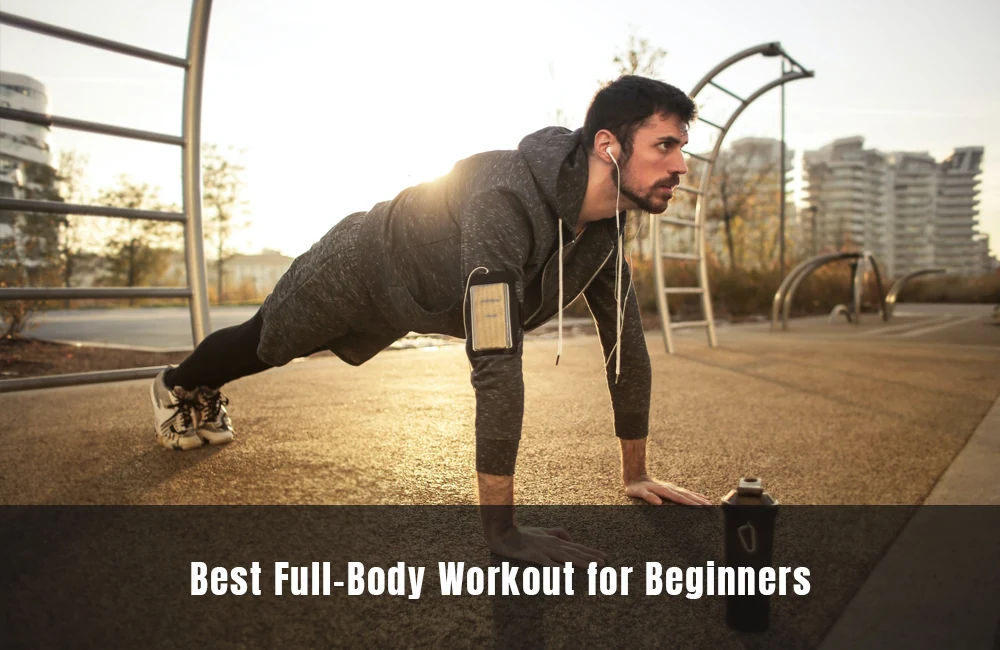
Best Full-Body Workout for Beginners
Table of Contents
For those just starting to workout, or re-start their fitness journey, you’re probably looking for the best full-body workout plan. After all, if you’re just beginning your workout regimen, having a solid routine is essential; but it’s also difficult to find time to work out AND stick to a solid program.
So if you want an easy way to stick with your routine and make sure each session hits every part of your body (and burns some calories along the way), this beginner workout plan should be perfect for you!
You can do this simple four-day split as many times as it takes until you feel like you’ve mastered the exercises. Then move on to our next beginner full-body plan! You can even give yourself a massage to thank muscles for doing so well!
The Workout
Perform each exercise below in order, resting 30-90 seconds between circuits. To gain more muscle perform 4-5 rounds of the circuit, resting 1 minute between rounds. For fat loss do 10-12 rounds of the circuit with 45-60 seconds rest between rounds. Complete 3 total circuits per workout session.
Workout A: Chest, Triceps and Core
1A) High Incline Dumbbell Press – 4 Sets, 8 Reps (2 Minutes Rest)
1B) Cable Pec Deck Fly – 4 Sets, 12 Reps (2 Minutes Rest)
3C) Elevated Plank – 2 sets till failure (60 Seconds Rest)
Workout B: Back, Traps and Shoulders
2A) Dumbbell Hammer Curl – 4 Sets, 8 Reps (2 Minutes Rest)
2B) High Cable Row – 4 Sets, 12 Reps (2 Minutes Rest)
4C) Side Plank – 2 sets till failure (60 Seconds Rest)
Workout C: Legs and Abs
3A) Walking Lunge – 4 sets x 10 steps each leg (1 Minute rest between legs); 1 set of 20 reps with no rest at the end. (3 minutes rest before repeating the circuit- 3x total.)
3B) Seated Single-Leg Cable Row – 3 sets, 15 reps per side. (90 seconds rest before repeating the circuit- 3x total.)
5C) Crunch – 2 sets of 20 reps (60 seconds rest before repeating the circuit- 3x total.)
For best results perform this workout 3 times a week. For example Mon/Wed/Fri or Tue/Thurs/Sat. The numbers can be changed by increasing or decreasing the number of repetitions and sets to achieve desired intensity and time under tension for each exercise. Remember, all weights used should be challenging, but not so heavy as to compromise good form!
Workout D: Chest, Back, and Core
4A) Lat Pulldown – 4 sets x 12 reps (2 Minutes Rest)
4B) Incline Dumbbell Chest Press – 4 sets x 8 reps (2 Minutes Rest)
4C) Hanging Knee Raise – 3 sets x to failure (No Rest.)
6C) Superman – 2 sets till failure (60 Seconds Rest).
Complete 3 total circuits per workout session. Remember, this isn’t a race! Increase the weight you’re lifting as long as you can maintain perfect form and stay within your allotted time. Stop whenever you feel like you might fail on the next rep – it’s better to leave something in the tank than exhaust yourself and make yourself more susceptible to injury.
Remember: Once the routine starts losing its charm and becomes stale, change it up! Keep track of what works best for your body in a training journal so when it comes time to change things up, you can be sure to pick the best new exercises and continue making progress!
Workout D: Legs and Abs
7A) Dumbbell Step up – 2 sets x 10 reps per leg (1 Minutes Rest)
7B) Bulgarian Split Squat – 3 sets x 15 reps per leg (45 Seconds Rest.)
9C) Cable Crunch – 3 sets x 20 reps (No Rest.)
Complete 2 complete circuits per workout session. Remember, this isn’t a race! Increase the weight you’re lifting as long as you can maintain perfect form and stay within your allotted time. Stop whenever you feel like you might fail on the next rep – it’s better to leave something in the tank than exhaust yourself and make yourself more susceptible to injury.
Remember: Once the routine starts losing its charm and becomes stale, change it up! Keep track of what works best for your body in a training journal so when it comes time to change things up, you can be sure to pick the best new exercises and continue making progress!
See also Making the Most of Your Upper Butt Workout
Best full-body workout machine for home?
Just get a pullup/dip bar, and attach it to your doorframe. Just get one that is strong enough to support you (I think I am around 200lbs). Don’t do more than 10 of these in a row though if you haven’t done them before – they can be really tough on the shoulders. If you’re not ready for that then just add weight and 3 sets of 8-12 reps is probably good or whatever reps you feel like at the time: whatever number makes it challenging, but not so many that form gets compromised. And don’t try to do more than 1 session per day – this shit took me years of gradually increasing conditioning to get used to!
Read also about over the counter oral steroids
Best full-body workout at home
Rip’s Bigger Leaner Stronger Program
If you want a slightly less intense workout, or if you have a hard time recovering from the first workout of the week, drop the weight on dumbbell bench presses and incline flyes to 60-75% of your usual weight. Sometimes I’ll do those two exercises every other week instead of every week. Also, consider deloading sets once per month on those two exercises as well as all later sets for squat/overhead press/deadlift/bent over row (I know this is already prescribed in the program).
Another option is you could do each exercise for 5 sets only (dropping rest periods to no more than 90 seconds), except for dumbbell bench presses and incline flyes, which would be done for 6 sets (dropping rest periods to no more than 60 seconds) . This will make the program about 20-25% easier.
If you don’t like cardio, it’s perfectly fine to cut out all cardio from the Bigger Leaner Stronger Program. On paper, I think this routine is plenty of cardiovascular work (especially if you take my advice above). If you’d like to do some low-impact activities like yoga or biking outside then that could help keep your sanity in check while still providing some additional benefit in terms of toughness training. The idea behind adding in optional high-intensity interval training stuff is just so folks can get creative with it and make it as tough as possible. For example, if you’re doing the BLS program as I’ve written it (which is plenty tough), but feel like you could handle even more volume, the high-intensity stuff might be a good way to go about bumping up the volume without having to clog your recovery systems too much. If you do decide to add in optional cardio…
If you want to use low-impact activities like yoga/ biking/walking etc., then just do those on off days or after lifting sessions to further ensure that you recover properly from all workouts. Remember, this isn’t an endurance routine – we only want folks adding in extra conditioning here and there for added toughness training. Doing such activities before lifting will compromise the quality of your lifting sessions, and doing them after lifting will compromise the quality of your recovery.
If you do decide to add some form of extra high-intensity interval training (HIIT) like running intervals or sprints etc., then keep it at 2-3 total sessions at most per week ONLY. Again, this isn’t an endurance routine, so we only want folks adding in extra conditioning here and there for added toughness training. Doing such activities too frequently will compromise the quality of your lifting sessions, which is absolutely unacceptable if you’re looking to build muscle and strength as fast as possible.
In other words…
On paper, I think this routine is plenty tough enough on its own. The optional cardio/HIIT stuff is just a way for folks who might not be ready/able to progress to the same level of conditioning as in my other programs but still want in on all the benefits of increased work capacity. The stuff is optional in order to accommodate different individuals’ needs and preferences. If you’re already conditioned well enough that it’s no longer challenging, then don’t do it!
For cardio HIIT workouts, pick one or two exercises per workout session (per muscle group) and perform 6 sets of each move with only 30 seconds of rest between sets. For example…
Cardio HIIT Workout A exercise 1: sprints exercise 2: jump squats total sets 6 total reps 18-36
The aim here is to create a flow where you can seamlessly transition from one exercise to the next. For example, perform 6 reps of sprints on a track/field; then transition into 10-20 seconds of jogging (focus on active recovery here); then transition into 6 reps of jump squats; then transition into 20 seconds or more of jogging (again, focus on active recovery here); and so forth.
If you’re not familiar with how to perform any of these exercises, simply search YouTube for “how to X exercise”, where X is the name of each move I’ve written above. You’ll find countless instructional videos explaining exactly what you need to do in order to get the job done.
For conditioning HIIT workouts, choose one full-body compound movement per workout session and perform 5 sets of 10 reps with only 10 seconds rest between sets. For example…
Conditioning HIIT Workout A exercise 1: sprints exercise 2: jump squats total sets 5 total reps 50-100 (depending on conditioning level and workout length)
With the exception of the last set in which you should shoot for as many reps as humanly possible, all other sets should be performed at a controlled speed; we want to move with purpose here, but not so fast that we compromise form or add injury risk. On your last set, feel free to go balls out and do whatever it takes in order to get those rep counts up. Going too fast on this set will still compromise safety though, so make sure you can maintain proper form throughout all reps in each set.
The aim of conditioning HIIT workouts is to push your heart rate up (and keep it there) for an extended period of time. Do NOT simply perform these movements at max speed, however; the goal here is to increase work capacity via added resistance training, not by performing cardio. You can achieve this balance by controlling how fast you move between exercises and sets; again, focus on moving with a purpose (not too slow though). If you’re familiar with any of these movements already and are able to do them quickly enough for effective conditioning HIIT without compromising safety or proper form, then by all means go ahead and do so. Otherwise stick to the same speed you’d use for maximum strength/hypertrophy gains at each rep range, which will still be plenty fast enough to create the desired training effect.
So, that’s pretty much it for this article! I hope all of you who choose to try out these routines are able to benefit from them as much as I have. If you do decide to try either one of them out, make sure you let me know what you think after your first workout or two. Feedback is always welcome, especially if it involves bringing more awesomeness into our lives through articles like this one.
Best full-body workout for women
High-Intensity Interval Training is nothing new. Though it has exploded in popularity over the past few years, people have been using HIIT training techniques for well over half a century. Modern-day cardio machines are based on research performed by exercise physiologist Dr. Thomas L. DeLorme who used treadmills with inflatable flotation bladders to alter the subject’s center of gravity. His findings showed that this type of exercise improved aerobic capacity more effectively than traditional steady-state forms or low-intensity physical therapy.
The obvious question here is why haven’t most people heard about high-intensity interval training? Probably because at first glance it seems rather harsh, maybe even cruel. No pain no gain, as they say. The truth is, this type of training does not need to be any harder than traditional steady state cardio for it to produce superior results . In fact, if you go all out during each and every interval session , you’re going to burn yourself right out of a fitness routine that will yield the best long term results.
The goal behind a well designed interval program is to take advantage of your body’s natural response to stressors by forcing the muscles through repeated bouts of high intensity exercise followed by short periods of rest or low intensity work . When performed correctly, HIIT workouts have been proven time and again as being extremely effective at improving aerobic capacity as well as anaerobic threshold . You can advantage of these scientifically validated findings in the comfort of your own home using nothing more than a good old fashion set of dumbbells.
Best full-body workout for men
The HIIT method of training is a simple concept that can yield tremendous results, especially if you consider yourself a busy person. The idea is to push your heart rate up (and keep it there) for an extended period of time by doing high-intensity interval training. Many people choose this type of workout because they believe that more intense exercise will burn fat faster than less strenuous forms of activity . While the amount and duration of energy expenditure during high-intensity interval sessions do generally exceed those of traditional steady state cardio, the physiological adaptations – specifically the hormonal – are similar between aerobic and anaerobic types, which leads us to believe that both methods may yield similar results.
This has led many fitness enthusiasts and health professionals alike to question whether all this energy expenditure is really necessary. If we can get the same benefits from a workout in half the time, who wouldn’t sign up for that type of training?
The answer to this question lies in understanding how both forms of activity effect our body and hormones. It turns out that there are major differences in the way your muscles react to each form of exercise. When you perform anaerobic activities such as weight lifting, you’re essentially breaking down muscle fibers through high intensity contractions. This forces muscles into a state of repair, during which they will build themselves back up stronger than before. The process by which this occurs is called hypertrophy and it’s something all serious lifters want to achieve. Cardio on the other hand does not stress the body in the same way . Instead of causing muscles to hypertrophy, aerobic exercise elicits changes through increasing capillary density , mitochondrial activity and endurance .
Finally, most anaerobic forms of training are limited by how much muscle you can build. When your body is exposed to resistance exercises it begins to produce growth hormone (GH) which is an important hormone for overall health. This also helps with getting leaner faster because GH has been shown to mobilize stored fat cells so they can be used as an energy source . While GH remains elevated following cardio workouts as well, its effects on body composition have been found to be less significant than those from weight lifting. As a result, those who want to look shredded should spend more time building muscle.
Does that mean you should stop doing cardio? Of course not! Just don’t expect it to help you get more big and ripped. To look your best, pick activities where keeping a high heart rate is important. By switching between aerobic and anaerobic work (weight lifting and HIIT), you will be able to maximize both fat loss and muscle gain while still recovering properly, which is the key to long term results.
See also Why Working Out Through Muscle Soreness Should Be Avoided
